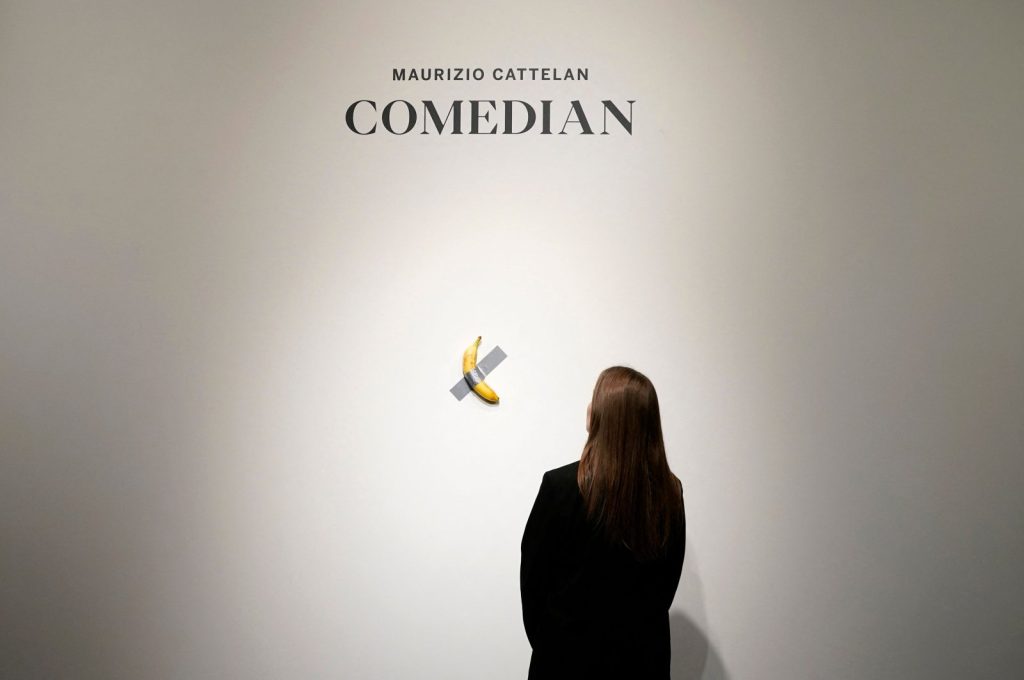Some bananas are for breakfast. Some, apparently, are for billionaires. Last week, Maurizio Cattelan’s infamous duct-taped banana, titled Comedian, was auctioned off for $6.24 million. A banana! Sold for more than most luxury yachts! Naturally, this sent the world spiraling into a debate about art, absurdity and the squishy concept of value. But while this golden fruit enjoys its 15 minutes of fame, let’s take a moment to celebrate another banana: Europe’s Blue Banana, the OG overachiever of bananas.
The Blue Banana, for the uninitiated, is not a fruit but an economic metaphor. It’s the crescent-shaped stretch of Europe connecting London to Milan, passing through industrial powerhouses like the Ruhr Valley, Zurich and Brussels. If Cattelan’s banana is a punchline, the Blue Banana is Europe’s breadwinner—where economies hum, cities thrive and innovation flows faster than espresso in Milan.
But what if these two bananas have more in common than meets the eye? Let’s peel back the layers.
Duct tape vs. railways
Cattelan’s banana wouldn’t exist without duct tape. It’s the linchpin holding art and fruit together in one gloriously ridiculous statement. Similarly, the Blue Banana wouldn’t exist without its connective tissue: the transport networks, trade routes and financial systems that bind its cities into a buzzing hive of productivity. Whether it’s the Eurostar zipping from London to Brussels or the Rhine River ferrying goods across Germany, the Blue Banana thrives on staying taped together.
But here’s the twist – duct tape is cheap. Infrastructure? Not so much. The Blue Banana’s success depends on billions of euros in upkeep, from high-speed rail projects to greening urban spaces. In a way, both bananas are held together by invisible investments – one literal, the other figurative.
Rotten spots
Let’s talk perishability. Cattelan’s banana comes with instructions: replace the fruit as it rots, but keep the tape. Brilliant! The Blue Banana, too, has its own shelf-life issues. Demographic decline is making parts of it feel overripe, while regions outside the curve – southern and eastern Europe – feel like they’ve been left in the bargain bin. Brexit has already hacked off the British chunk of this economic banana, and rising nationalism threatens to tear through the duct tape holding Europe together.
Even climate change, the great squasher of human ambition, looms large. Floods, droughts and energy crises could hit the Blue Banana where it hurts – its infrastructure and productivity. Without adaptation, this banana might brown before its time.
Art of value
Cattelan’s banana is absurd. That’s the point. It mocks our obsession with value and dares us to laugh while writing seven-figure checks for fruit. The Blue Banana, too, plays with the idea of value, but on a continental scale. Is it just a symbol of Europe’s richest cities, or does it represent something bigger – an interconnected vision of prosperity?
To keep it meaningful, the Blue Banana needs to get creative. It can’t just be the elite playground of Frankfurt financiers and Milanese fashionistas. It has to invest in inclusivity, pulling in the regions outside its curve. It has to champion sustainability because, let’s face it, a banana built on fossil fuels is so last century.
In the end, both bananas offer a lesson: value isn’t static; it’s what we make of it. Cattelan’s banana reminds us to laugh at ourselves, to question the ridiculousness of modern priorities. The Blue Banana challenges Europe to stay connected, innovative and adaptable in an increasingly fragmented world.
So here’s to bananas in all their forms: duct-taped or metaphorical, breakfast or billion-dollar art. May we always find the courage to reimagine their worth – and maybe even ourselves – in the process.
Pass the fruit bowl, Europe. It’s time to get peeling.


